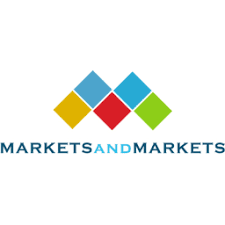
The tank insulation market size is estimated to be USD 5.2 billion in 2018 and is projected to reach USD 6.5 billion by 2023, at a CAGR of 4.50% between 2018 and 2023. Rising environmental awareness is contributing to the growth of the market. Growing demand for insulation technologies in the oil & gas and chemical industries has created various opportunities for tank insulation manufacturers. However, volatile raw material prices act as a restraint for the market growth.
Download PDF Brochure:
https://www.marketsandmarkets.com/pdfdownloadNew.asp?id=76733235
The major players in the tank insulation market include Rockwool International A/S (Denmark), Owens Corning (US), Saint-Gobain (France), Kingspan Group (Republic of Ireland), Armacell International S.A. (Germany), Cabot Corporation (US), Johns Manville (US), Knauf Insulation (US), BASF SE (Germany), and Covestro AG (Germany).These players have adopted various growth strategies, such as expansions, acquisitions, new product launches, and agreements to expand their presence and increase their shares in the tank insulation market. Expansions and acquisitions have been the most adopted strategies by major players from 2016 to 2018, which have helped them to expand their regional presence and strengthen their product offerings.
Rockwool International A/S is one of the leading manufacturers of tank insulations, globally. The company focuses on the strategies of acquisitions and expansions to maintain its leading position in the market. For instance, in November 2017, the company set up its first rockwool factory in Romania. The expansion helped the company to meet the growing demand for rockwool insulation materials. In addition to this, in November 2017, the company acquired Flumroc AG, a rockwool manufacturer in Switzerland. This helped the company to strengthen its product portfolio.
Owens Corning is another major player in the tank insulation market. The company has been focusing on acquisitions and new product launches as part of its growth strategies. In April 2018, the company acquired Guangde SKD Rock Wool Manufacture Co. Ltd. (China), a manufacturer of mineral wool. The acquisition helped the company to strengthen its presence in China. In February 2018, the company acquired Paroc Group, a leading producer of mineral wool insulation for building and technical applications in Europe. This acquisition strengthened the company’s product portfolio of tank insulation products. Furthermore, in April 2017, the company introduced the first and only formaldehyde-free Thermafiber light-density mineral wool insulation. This helped the company to strengthen its product portfolio in the tank insulation market.
Request Sample Report at
https://www.marketsandmarkets.com/requestsampleNew.asp?id=76733235
The tank insulation market size is projected to reach USD 6.5 billion by 2023 from USD 5.2 billion, at a CAGR of 4.50% between 2018 and 2023. Tank insulation helps in energy conservation and enables to control the process temperature in storage and transportation tanks. Tank insulation uses high performance insulation materials such as cellular glass, polyurethane, polyisocyanurate, EPS, fibeeglass, rockwool, and others to achieve the required thermal conductivity at various temperatures. It is widely used in transportation and storage of oil & gases and chemicals. The tank insulation market is mainly driven by the growth in various process industries such as pharmaceuticals, food& beverage processing, oil & gas and chemicals.
Based on material, the tank insulation market has been segmented into PU & PIR, rockwool, fiberglass, elastomeric foam, EPS, cellular glass, and others. The PU & PIR segment is estimated to grow at the second-highest CAGR and accounted for the largest share, in terms of value, of the overall tank insulation market. The dominance of the PU & PIR segment is expected to continue during the forecast period due to its increasing use in the oil & gas industry. PU & PIR are majorly used in storage & transportation facilities of LNG, LPG, ethylene, ammonia/ fertilizer, and underground oil ducts, where extremely low temperatures are required. Furthermore, these are also used in cold stores and food processing plants.
Based on type, the tank insulation market has been segmented into storage tank insulation and transportation tank insulation. The storage tank segment accounted for the largest share and is the fastest growing type. The dominance of the storage tank insulation segment is expected to continue during the forecast period due to its increasing demand from end-use industries such as oil & gas, chemicals, and energy & power for the storage of chemicals, LNG, thermal energy, and other gases.
Based on end-use industry, the tank insulation market has been segmented into oil & gas energy & power, chemicals, food & beverage, and others. The market in the chemical end-use industry segment is estimated to grow at the highest rate, in terms of value, during the forecast period. This high growth is owed to the increasing chemical production facilities and capacities across the globe.
APAC is estimated to be the fastest-growing market for tank insulation during the forecast period, in terms of value. Rising demand for chemicals, increasing investment in the energy sector, urbanization, industrialization, and infrastructural development are expected to drive the global tank insulation market during the forecast period. In addition, huge oil production in Russia drives the demand for tank insulation materials that are used to insulate tanks in oil plants. For instance, Armacell acquired De Xu, a Chinese manufacturer of elastomeric insulation foams. This is expected to help the company strengthen its position in the tank insulation market and the company’s market position in APAC region.

